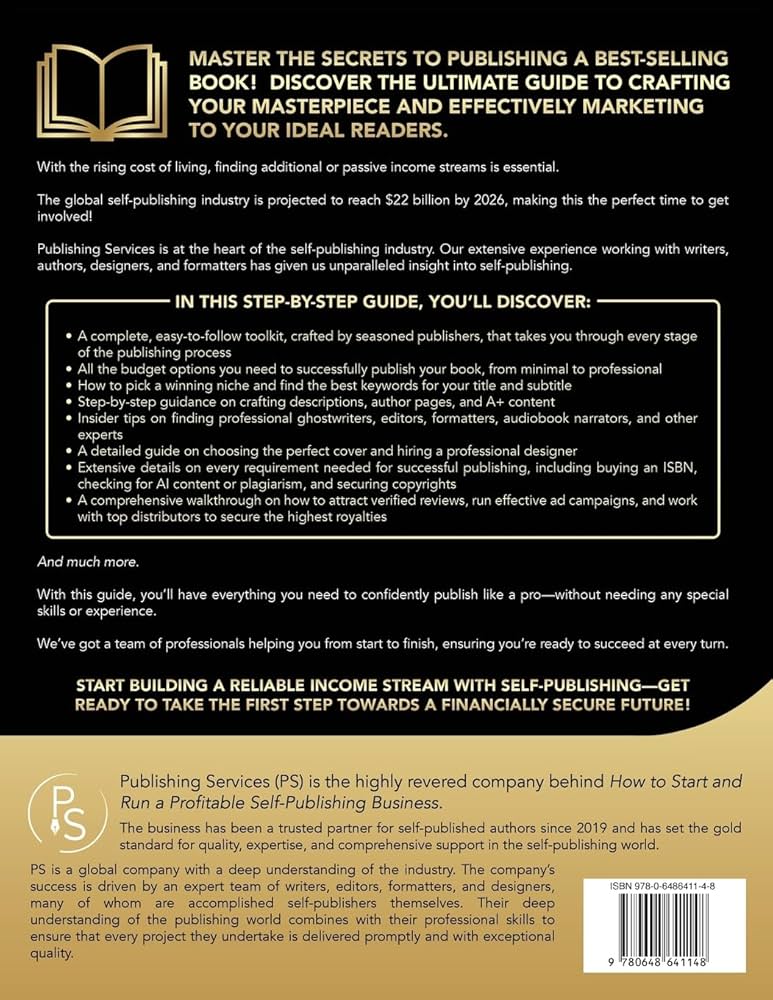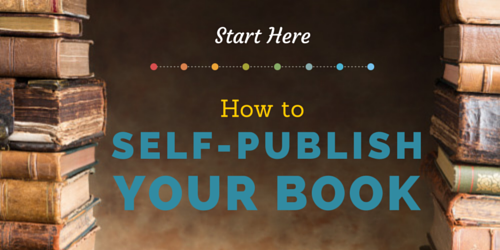Have you ever wondered when self-publishing actually began? If you’re thinking it’s just a recent trend thanks to the internet, you might be surprised.
Understanding the roots of self-publishing can change how you see your own chances of getting your work out there. By knowing its history, you’ll discover why self-publishing has become such a powerful tool for writers like you. Keep reading, and you’ll find out how self-publishing started—and why it could be the perfect path for your story.

Credit: www.amazon.com
Early Roots Of Self Publishing
Self publishing has a long history that goes back centuries. People have wanted to share their stories and ideas without waiting for others to approve. The desire to create and distribute works independently is not new. It started long before the digital age.
Early self publishers found ways to make their voices heard. They worked hard to copy, print, or sell their writings. This section explores those early efforts.
Manuscripts And Scribes
Before printing presses, scribes copied texts by hand. Monks and scholars spent hours writing manuscripts. These handwritten books were rare and costly. Some writers paid scribes to copy their work. It was a slow and careful process.
Self publishing meant finding someone to write and share your story. Writers had little control but tried to reach readers through these copies. Manuscripts were the first step toward independent publishing.
The Printing Press Revolution
The invention of the printing press changed self publishing forever. In the 15th century, Johannes Gutenberg made books easier to produce. Printed books cost less and reached more people. Writers could now print their own works more easily.
Printing presses helped spread ideas quickly. Authors gained new power to share stories without relying on wealthy patrons. This shift laid the foundation for modern self publishing.
Self Publishing In The 19th Century
The 19th century marked a turning point for self publishing. It became more accessible and popular among writers. New printing methods lowered costs and allowed more people to share their work. Self publishing was no longer just for the elite. Ordinary authors could now reach readers directly.
This era laid the foundation for modern self publishing. It showed how writers could control their own stories. The 19th century was a time of freedom and creativity for authors. They started to use self publishing to express ideas without limits.
Pamphlets And Broadsides
Pamphlets and broadsides were common forms of self publishing. They were short, printed sheets that shared news, opinions, or stories. Easy to produce and distribute, they spread ideas quickly. Many writers used these to reach wide audiences at low cost.
These printed materials often tackled politics, social issues, or local events. People bought or exchanged them in markets and public places. Pamphlets and broadsides helped authors build a voice outside traditional publishing houses. They became tools for change and personal expression.
Authors Taking Control
More authors began to publish their own books in the 19th century. They paid for printing and managed sales themselves. This gave them full control over content and profits. Authors no longer depended on publishers to decide what to print.
Self publishing allowed writers to keep their creative freedom. Many used this to share controversial or unique ideas. They reached readers directly through mail or local shops. This independence encouraged diverse voices and new styles in literature.
The Rise Of Independent Publishing In The 20th Century
The 20th century saw a big change in how books and other writings were made. More people wanted to share their own stories and ideas without waiting for big publishers. This period marked the rise of independent publishing. Small groups and individuals started creating and distributing their own work. This new wave gave voice to many new writers and topics.
Independent publishing grew from the need to reach readers directly. It allowed more creativity and freedom. Writers could explore different styles and subjects. They did not have to follow strict rules from major publishers. This freedom helped many unique voices to be heard.
Small Presses And Zines
Small presses played a key role in independent publishing. They were smaller companies that printed books and magazines. These presses often focused on special topics or new authors. Zines, or small magazines, became popular in the 1960s and 70s. They were easy to make and share. Zines covered music, politics, art, and personal stories. They gave a platform to people outside mainstream media.
Technological Advances
Technology helped independent publishing grow quickly. Photocopy machines made it easy to copy pages. This lowered the cost of making small books and zines. Later, computers and printers made the process even simpler. Writers could design and print their work at home. The internet helped share these works with more readers. These tools made publishing more accessible for everyone.

Credit: thewritersally.com
Digital Age And Modern Self Publishing
The digital age changed self publishing in many ways. Technology made it easier for writers to share their work. Authors no longer need traditional publishers to reach readers. The internet opened new doors for creativity and sales. Writers can now publish books quickly and cheaply.
Modern self publishing lets authors control their work. They decide the cover, price, and marketing. Readers get access to more diverse books. The power shifted from big companies to individual writers. This change helped many new voices be heard.
E-books And Online Platforms
E-books became popular with the rise of e-readers and smartphones. Writers can publish digital books on many online platforms. Amazon Kindle, Apple Books, and Kobo lead the market. These platforms offer tools to format and sell books easily. Authors upload files, set prices, and track sales in real time. Readers enjoy instant downloads and lower prices. Digital books also reach a global audience without physical shipping.
Print-on-demand Technology
Print-on-demand (POD) technology lets authors print books only when ordered. This cuts costs and avoids large print runs. POD services like IngramSpark and Lulu made self publishing affordable. Writers can offer physical copies without inventory risks. The quality of POD books improved over time. POD also supports local and small bookstores. Authors can update their books anytime without waste.
Impact On The Publishing Industry
Self publishing has changed how books reach readers and how authors create their work. It opened new doors outside traditional publishing houses. This shift affected many parts of the publishing world.
Authors now have more control over their books. Readers find more types of stories and ideas. The industry faces new challenges and opportunities because of this change.
Changing Author-publisher Dynamics
Before self publishing, authors needed publishers to print and sell books. Now, writers can publish their own work without a middleman. This change gives authors more power over their stories.
Authors decide on book design, pricing, and marketing. They keep more profits from sales. Publishers still play a role but no longer control everything.
Diverse Voices And Accessibility
Self publishing allows many new voices to be heard. Writers from different backgrounds share unique stories. This diversity was harder to find in traditional publishing.
Books become available to a wider audience. People in remote places or with special interests find books they like. Self publishing makes reading more open and varied.

Credit: janefriedman.com
Frequently Asked Questions
When Did Self Publishing First Begin?
Self publishing started in the 15th century with the invention of the printing press. Authors began printing their own works independently, bypassing traditional publishers. This early form allowed writers to control content and distribution, laying the foundation for modern self publishing.
How Has Self Publishing Evolved Over Time?
Self publishing evolved from printed pamphlets to digital platforms. The rise of the internet and eBooks revolutionized access and distribution. Authors can now publish globally with minimal costs, gaining more control and faster market entry than ever before.
What Triggered The Rise Of Self Publishing Today?
The rise of self publishing today is driven by digital technology and eBooks. Online platforms like Amazon Kindle Direct Publishing make it easy for authors to reach readers worldwide. This shift offers creative freedom and higher royalties compared to traditional publishing.
Who Benefits Most From Self Publishing?
Independent authors, niche writers, and entrepreneurs benefit most from self publishing. It offers control over content, faster publishing times, and better profit margins. Self publishing suits those seeking direct reader engagement and flexible marketing strategies.
Conclusion
Self-publishing began long ago with simple handwritten books. Technology made it easier and faster over time. Today, many authors choose self-publishing to share their stories. It gives writers control and freedom to publish anytime. The journey started centuries back but keeps growing strong.
Writers now have more ways to reach readers. Self-publishing remains an important part of the book world. It lets creativity flow without many limits. The history shows how much publishing has changed. This path will continue to shape how books appear.